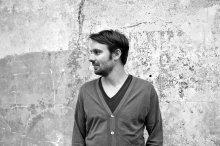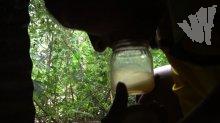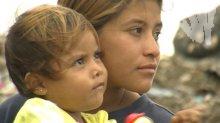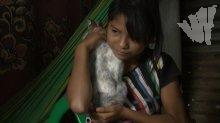Premiere in Nicaragua of the "By my side" film
Róger Solórzano Canales | Aug 14, 2012

The documentary film tells the lives of three women in the “Chureca”, and will soon be exhibited around the world.
Dominga is glue addict, she has AIDS and would like to see the son she had and never met. Maryuri is 20 years old, and despite a strong respiratory infection she expects that her pregnancy progressed well. Fabiola is only 12 years old, she must choose between a better future in a remote location or to accompany her mother in extreme poverty. They all know each other. They share the same stage of life: the landfill of “La Chureca” (Managua) as well as been the protagonists of the documentary film "By my side", which pre-premiere will take place on Thursday August 16th in Nicaragua.
Produced by a small but very enthusiastic international team, By my side was shot between October and December 2011. Its director, the Swiss journalist Jean-Cosme Delaloye, had come into the country to produce various reports and from the beginning of that year came in contact with the “Chureca”, considered the largest open dump in Central America. There he also encountered the difficult situation of more than 1,500 people who live and compete in the job of getting the best waste for recycling.

The documentary was able to bind a diverse group of collaborators in Nicaragua and the USA. All the filming was shot by only 3 persons: Jean-Cosme, his cinematographer Nicolas Garcia and his associate producer Edelmira Lopez -both based in Managua-, aided by a young man of the “Chureca”. Then, the edition was made in New York by Jackie French. With the music, he had the support of the Nicaraguans Perrozompopo and Cynjos as well as the international David Spinley (USA), Alon Yavnai (Israel), Roman Elsenser (Switzerland) and the “Mariachi Los Toros”, from Los Angeles (U.S.)
Today things have started to change in the “Chureca”, many for the better, others for worse. To watch this movie, you can go to the world pre-premier this Thursday August 16, at 7PM in the Spanish Cultural Center in Nicaragua.
Here we have the interview:
There have already been published a synopsis and articles on the film, but we would like to hear from the mouth of his own director what is it about.
The film is not about the “Chureca”, but about three girls live there and have to survive. The film is called “By my side” because the people there struggle to survive. There, each one in a family struggles to get recycling; it is like "your money, your recycling, is yours', so each one earns is for itself, is for his/her food. It's interesting because the relationships are complicated at the “Chureca”. But at the same time, everyone needs a person by their side. The story of the three of them is the story of their relationship with their mother, because when the mother is strong, I think you can survive a little bit better in the “Chureca”. And you'll see Dominga, Fabiola and Maryuri they have a very different mom. They have to make a choice, whether they leave or survive in the “Chureca”, if their mom is going to help them or not.
There are three female characters, why this choice?
What led you to focus on the relationship between your characters and their moms?
How was it to work there, in an environment as special as the “Chureca”?
To enter the “Chureca” I had a guide, a boy who lives there with his mom and his family. We never had security, our security was the respect, when you talk to someone with respect, I think that person will respect you. People knew me as "the gringo" at first, but they realized that I'm not gringo, I'm Swiss. Then at the end of the movie I was the brown (as Dominga, tan with the sun day by day)....We never had problems. It is a place with rules, organized, there are families that are very united...yes, there are abuses, there are glue addictions, there are many things, but after spending much time there, you are part of the ”Chureca” as well, and people respects you and knows you, it was not difficult.
What effect would you like the film produce?
Translated by Aída Pichardo
